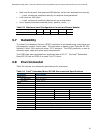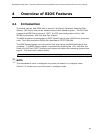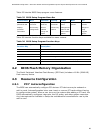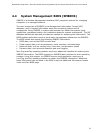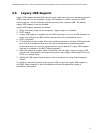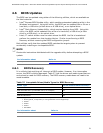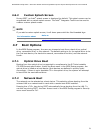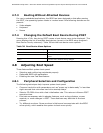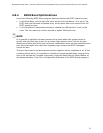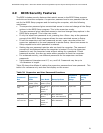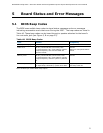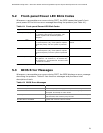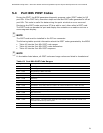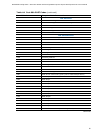
Embedded Intel® Atom Processor D2700 with Intel® NM10 Express Chipset
74
4.7.3 Booting Without Attached Devices
For use in embedded applications, the BIOS has been designed so that after passing
the POST, the operating system loader is invoked even if the following devices are not
present:
Video adapter
Keyboard
Mouse
4.7.4 Changing the Default Boot Device During POST
Pressing the <F10> key during POST causes a boot device menu to be displayed. This
Boot Device Priority submenu). Table 38 lists the boot device menu options.
Table 38. Boot Device Menu Options
Boot Device Menu Function Keys
Description
<> or <>
Selects a default boot device
<Enter>
Exits the menu, saves changes, and boots from the selected
device
<Esc>
Exits the menu without saving changes
4.8 Adjusting Boot Speed
These factors affect system boot speed:
Selecting and configuring peripherals properly
Optimized BIOS boot parameters
Enabling the new Fast Boot feature
4.8.1 Peripheral Selection and Configuration
The following techniques help improve system boot speed:
-
eight seconds that minimizes hard drive startup delays.
Select a CD-ROM drive with a fast initialization rate. This rate can influence POST
execution time.
Eliminate unnecessary add-in adapter features, such as logo displays, screen
repaints, or mode changes in POST. These features may add time to the boot
process.
Try different monitors. Some monitors initialize and communicate with the BIOS
more quickly, which enables the system to boot more quickly.




